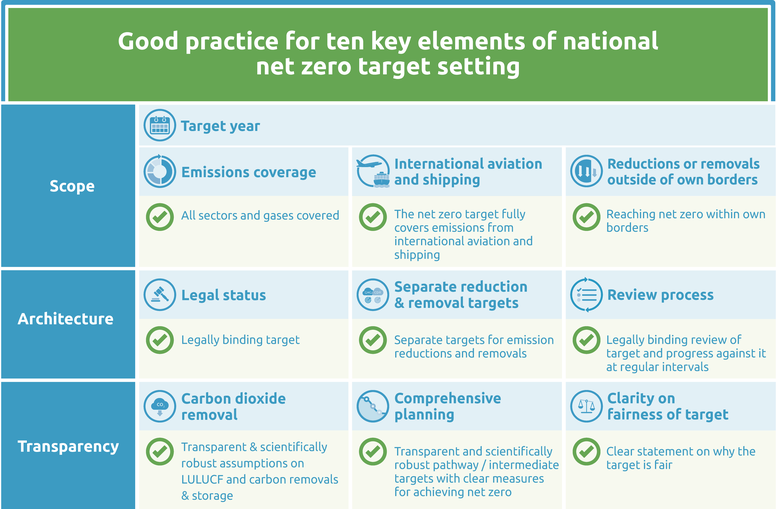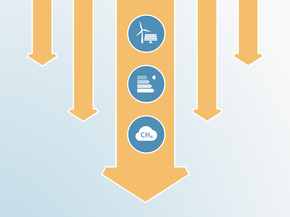Net zero targets
Summary
We evaluate the net zero target as: Poor.
Prime Minister Yoshihide Suga announced Japan’s 2050 net zero target in October 2020. An amendment of the Act to legally enshrine the 2050 net zero goal passed the Diet on 26 May, 2021 (Jiji Press, 2021; MOEJ, 2021c). The Green Growth Strategy, originally developed in December 2020, was revised in June 2021 to provide further information on sector-level roadmaps towards net zero. However, both the amended Promotion Act and the revised Green Growth Strategy do not provide sufficient details on key elements that ensures effectiveness and transparency of net zero targets, including the emissions scope, use of carbon dioxide removals, and reporting. An updated Long Term Strategy submitted to the UNFCCC before COP26 also does not contain these details (Government of Japan, 2021c). For this reason, the CAT rates Japan’s net zero target as “Poor”.
Ten key elements
Scope
- Target year – Japan commits to net zero emissions by 2050.
- Emissions coverage – The net zero target covers all greenhouse gases.
- International aviation and shipping – Japan provides no information on its intention to cover international aviation and shipping.
- Reductions or removals outside of own territory – Japan provides no information on its intention to use international offset credits to meet its net zero target.
Target architecture
- Legal status – Prime Minister Yoshihide Suga announced the net zero target in October 2020 (Prime Minister of Japan and His Cabinet, 2020). The amendment of the Global Warming Countermeasures Promotion Act to enshrine the 2050 net zero target passed the Diet on 26 May, 2021 (MOEJ, 2021d). The Japanese government has published the Green Growth Strategy to achieve the 2050 net zero target in December 2020 (The Government of Japan, 2020), which was then revised in June 2021 to reflect, among others, the 2050 net zero target and the new 2030 target (METI, 2021c). The net zero target is also included in the updated Long Term Strategy, which is was submitted to the UNFCCC before COP26 (Government of Japan, 2021c).
- Separate reduction & removal targets – Japan provides no information on its intention to communicate separate emissions reduction and removal targets.
- Review process – The Promotion Act provides for a regular review cycle of climate action and progress to reaching net zero by 2050 (METI, 2021c). Japan’s draft LTS states that the government will review the measures and policies outlined in that document at least every six years (Government of Japan, 2021c).
Transparency
- Carbon dioxide removal – Japan provides no information on its intention to communicate transparent assumptions on carbon dioxide removals. However, the Green Growth Strategy provides that the government will regularly review the prospects of new technologies which assumingly include CDR and other technological removal options (METI, 2021c).
- Comprehensive planning – In April 2021, Japan announced its 2030 target to reduce GHG emissions by 46% below 2013 levels, a big step forward from the previous 26% reduction target. This target was officially submitted in October 2021. As of May 2021, Japan had not provided interim carbon budgets, sector-specific targets, nor pathway modelling.
- Clarity on fairness of target – Japan provides no information on its intention to explain the target’s fairness, nor is the gap between realistic net zero target and a fair target explained.
Good practice
The Climate Action Tracker has defined the following good practice for all ten key elements of net zero targets. Countries can refer to this good practice to design or enhance their net zero targets.
Further analysis
Latest publications
Stay informed
Subscribe to our newsletter





